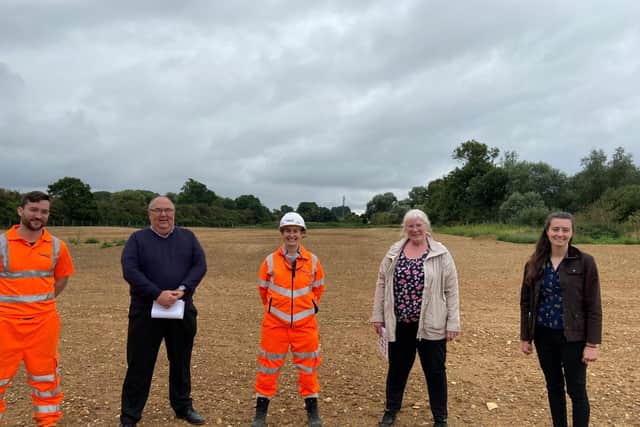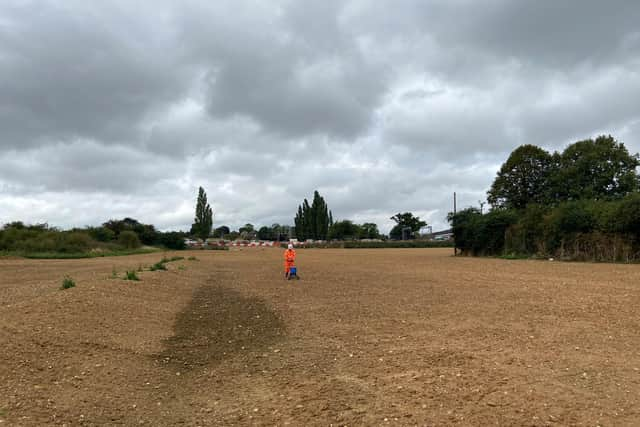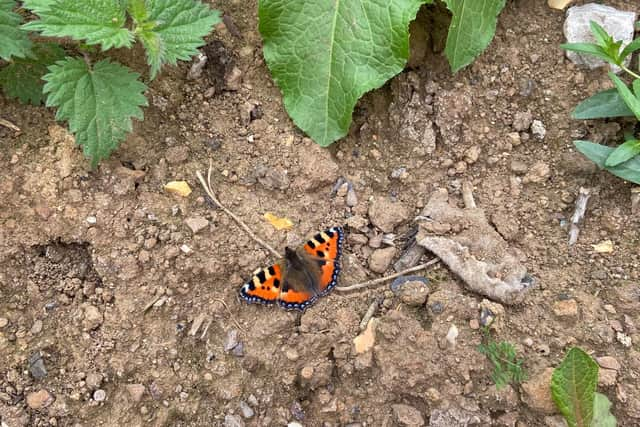Network Rail transforms Northamptonshire work compound into habitat to protect wildlife
and live on Freeview channel 276
A national railway company has transformed a Finedon work compound into a habitat to protect wildlife, following major railway upgrades.
Land near Finedon Station Road was used by engineers as they carried out electrification work as part of the £1.5 billion Midland main line upgrade. Once the railway improvements were completed in April, Network Rail and engineering company Amey developed the first specific habitat as part of an innovative project to manage protected species.
Advertisement
Hide AdAdvertisement
Hide AdRoute infrastructure engineer for Network Rail, Tara Scott, said: “As we carry out vital work to improve the railway, we are continuing to look for innovative ways to boost biodiversity. We were committed to turn this land in Finedon into an area for wildlife once we’d finished using it and it’s great to see progress on our first new habitat.


“We also want to thank residents who live near the Finedon Station Road site for their patience whilst the essential railway upgrades took place. Now the work compound has gone, the new site will attract wildlife to the area.”
Around 40,000 tonnes of material was moved off the site to allow teams to complete landscaping work in preparation for the new nature reserve. The material that was moved is being used by local businesses and for another work compound, meaning none of it has gone to landfill.
The site will contain ponds - which will be ideal for great crested newts - as well as grassland, wetland areas and open woodland. Trees and plants will attract birds, butterflies and bees.
Advertisement
Hide AdAdvertisement
Hide AdPrincipal environmentalist at Amey Consulting, Michael Whitehead, said: “We have applied our environmental consulting expertise to create a diverse ecological habitat in support of Network Rail’s journey to Biodiversity Net Gain.


"This project presents a strong example of sustainable thinking with clear benefits to the local environment and neighbouring communities as well as carbon reduction in the planned planting of trees and reuse of all clean engineering fill materials from the site.”
Network Rail carefully planned the project in a bid to bring faster, more reliable train services for passengers, whilst increasing biodiversity and mitigating the impact the major work has on wildlife.
This meant that, instead of installing fencing and then moving any great crested newts from work sites, teams could protect their habitat by helping to increase their population.
Advertisement
Hide AdAdvertisement
Hide AdNorth Northamptonshire Council’s executive member for Climate and Green Environment, Councillor Harriet Pentland, said: “Protecting our green environment is a key priority for the council and we are committed to working with partners to ensure that this happens in the area.


“We are delighted to see this former compound site transformed into a pocket of wilderness which is ideal for supporting an abundance of wildlife. Not only is this important for nature but it also helps to enrich our lives too.
“The project has also diverted materials from going to landfill by cleverly re-using them – an innovative way of reducing our environmental impact.”